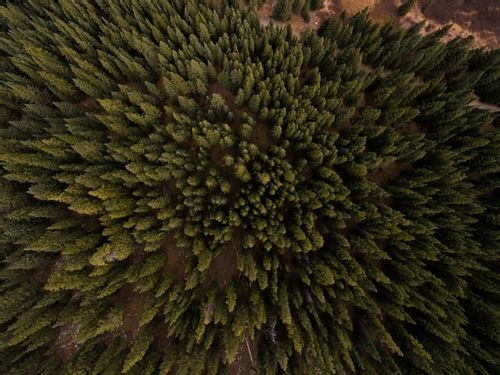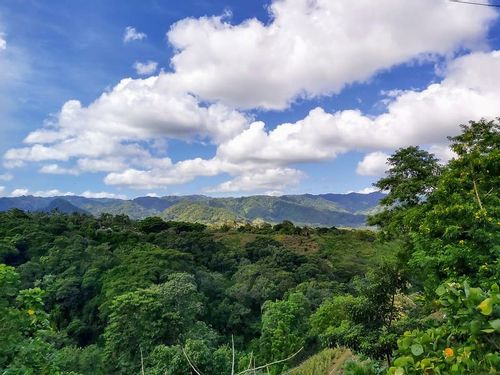FOR ALL AGES
You’ve heard of Yorkshire puddings and Bakewell tarts, but did you know there’s a Shrewsbury cake, Wigan Slappy and a Liverpool Tart?
This map, created by Kidadl, reveals the many baked foods named after parts of Britain -- from Aberdeen Roll in the north of Scotland, to the famous Cornish Pasty of the south-west. Have fun exploring it with your kids, then try our baking section and themed cakes for recipe ideas.
Lancashire appears to be the epicentre of baking. Here you’ll find the rival Eccles cakes and Chorley cakes, both superficially like mince pies, though the Eccles is larger and sweeter. Nearby, the cakes named after the village of Goosnargh are caraway flavoured shortbreads -- more biscuit than cake.
Goosnarghs are not the only cake to stretch the popular understanding of the word. Kendal mint cake is famous as an energy-rich walker’s snack; it’s more a slab of peppermint and sugar than what we might picture in a ‘cake’. The real jokers in the pack, though, are Pontefract cakes, which are tiny discs of liquorice, and are so far removed from a stereotypical cake that they probably shouldn’t be on this map at all.
Pies come in many regional varieties.
The south-east of England offers up sugary variety. We find a local derby in London between the Chelsea bun (a cinnamon-spiced currant bun) and the Tottenham cake (a pink-topped sponge). But don’t forget the London bun, an iced currant bun a bit like the more famous Bath Bun. Other cakes that might have been named after parts of London, but are not, include Angel Cake and Victoria Sponge. Meanwhile, Sussex pond pudding and Kentish pond pudding have fallen out of favour as suet-heavy dishes that need hours of steaming. Bedfordshire clangers have also lost some of their fame; the suet dumplings were once so popular that the word ‘clanger’ became a nickname for someone of Bedfordshire.
Scotland has a smaller selection at the geographic bakery. The Selkirk bannock is a sweet, fruity bread, supposedly adored by Queen Victoria. Dundee cake also gets royal approval; the fruity, almond-topped cake is said to be a favourite of Elizabeth II. Meatier fare can be found in the Forfar birdie (a meaty shortcrust bake, like a pasties) or the Kilmarnock Pie (a steak and gravy affair created for the local football club). Wales has many blessings, but placename-inspired cakes are not among them. We could find only Welsh cakes, delicious flat griddle cakes made from store cupboard staples. We’re not counting Welsh rarebit, as it’s little more than cheese on toast, and not actually Welsh.
We’ve also included a couple of cheats, for the sake of a laugh. Sandwich, in Kent, did give its name to the popular lunchtime meal, but only indirectly through the 4th Earl of Sandwich, who didn’t even live in the town. Meanwhile, we couldn’t resist including scones on the map. Although the crumbly treats may well be of Scottish origin, they are not thought to be associated with the town of Scone.
The map only includes foods that might be considered ‘baked’, like cakes, biscuits, puddings and bread. That’s why you won’t find such treats as Lincolnshire sausages, Worcestershire sauce or Caerphilly cheese or the map. If you think we’ve missed something, drop [email protected] a line.
Baking without flour… some simple recipes.
Make a book cake for kids who love reading.
Make a giant jaffa cake!
Read The Disclaimer
At Kidadl we pride ourselves on offering families original ideas to make the most of time spent together at home or out and about, wherever you are in the world. We strive to recommend the very best things that are suggested by our community and are things we would do ourselves - our aim is to be the trusted friend to parents.
We try our very best, but cannot guarantee perfection. We will always aim to give you accurate information at the date of publication - however, information does change, so it’s important you do your own research, double-check and make the decision that is right for your family.
Kidadl provides inspiration to entertain and educate your children. We recognise that not all activities and ideas are appropriate and suitable for all children and families or in all circumstances. Our recommended activities are based on age but these are a guide. We recommend that these ideas are used as inspiration, that ideas are undertaken with appropriate adult supervision, and that each adult uses their own discretion and knowledge of their children to consider the safety and suitability.
Kidadl cannot accept liability for the execution of these ideas, and parental supervision is advised at all times, as safety is paramount. Anyone using the information provided by Kidadl does so at their own risk and we can not accept liability if things go wrong.
Kidadl is independent and to make our service free to you the reader we are supported by advertising.
We hope you love our recommendations for products and services! What we suggest is selected independently by the Kidadl team. If you purchase using the buy now button we may earn a small commission. This does not influence our choices. Please note: prices are correct and items are available at the time the article was published.
Kidadl has a number of affiliate partners that we work with including Amazon. Please note that Kidadl is a participant in the Amazon Services LLC Associates Program, an affiliate advertising program designed to provide a means for sites to earn advertising fees by advertising and linking to amazon.
We also link to other websites, but are not responsible for their content.
Was this article helpful?



Browse Category



We’ll send you tons of inspiration to help you find a hidden gem in your local area or plan a big day out.



Check your inbox for your latest news from us. You have subscribed to:
Remember that you can always manage your preferences or unsubscribe through the link at the foot of each newsletter.